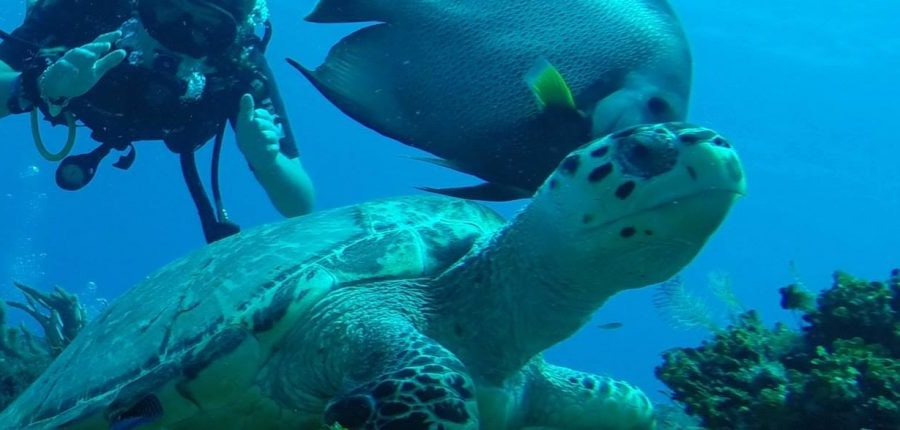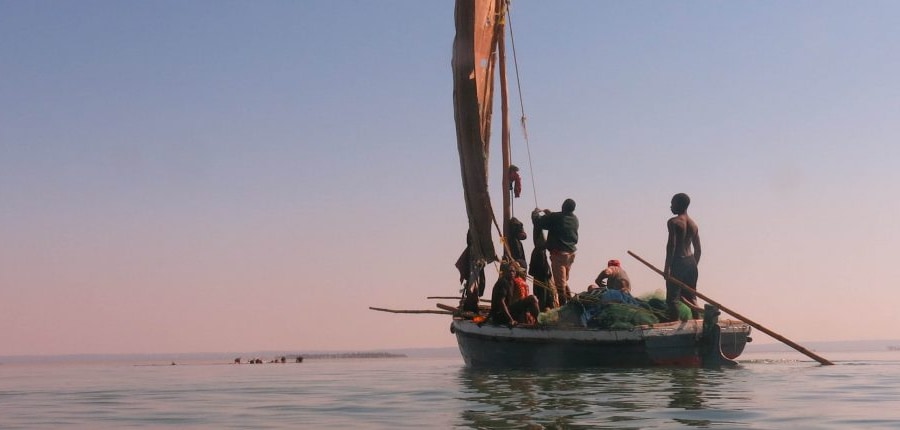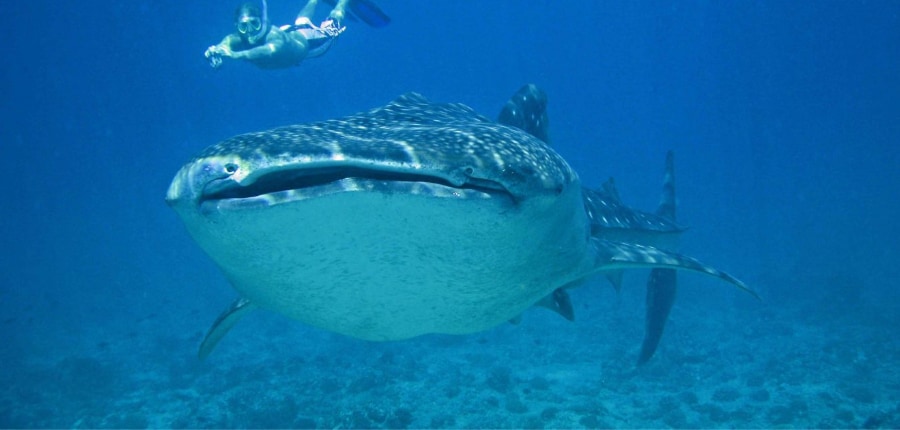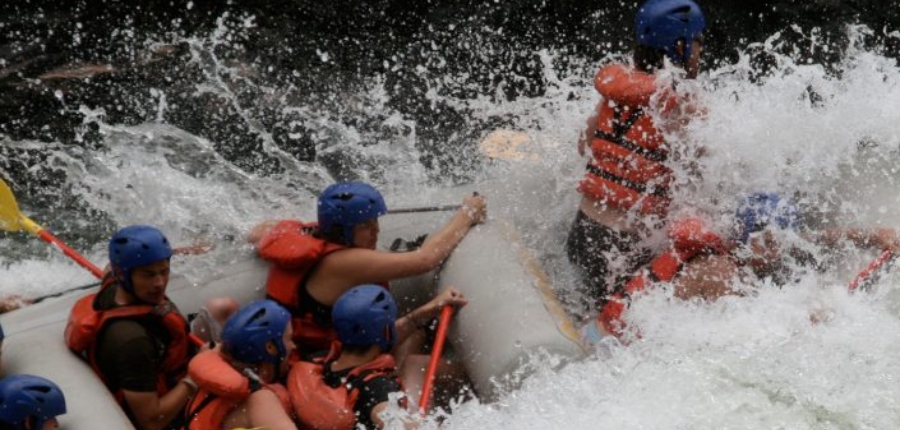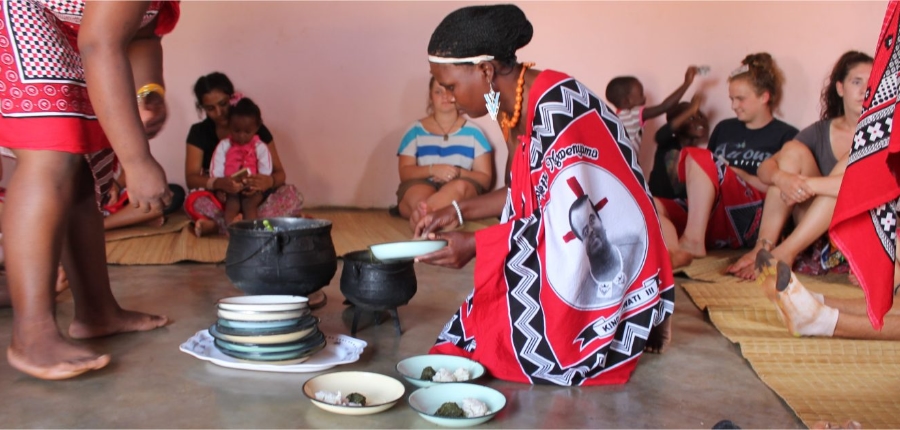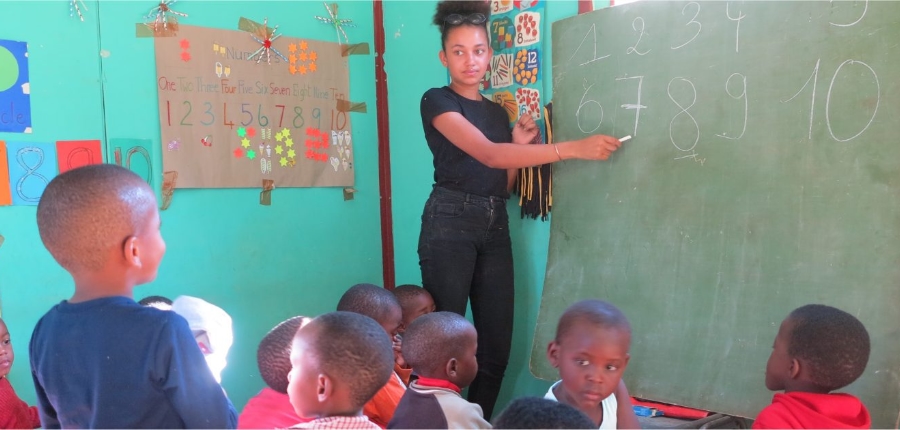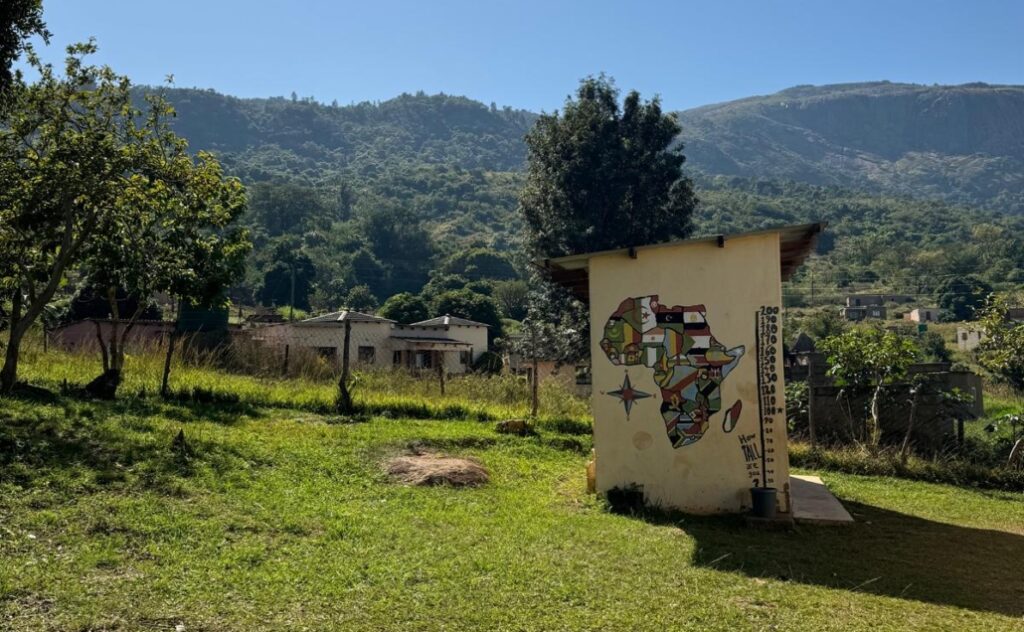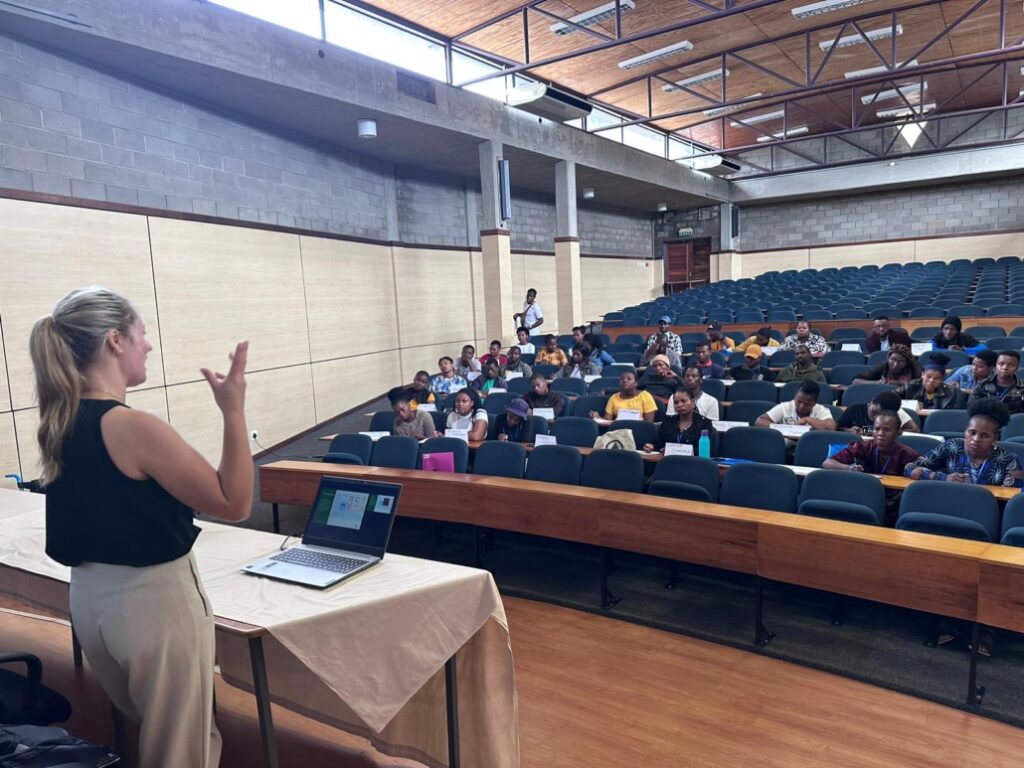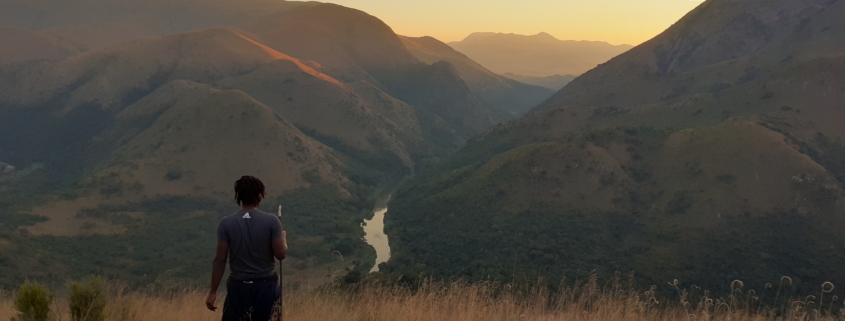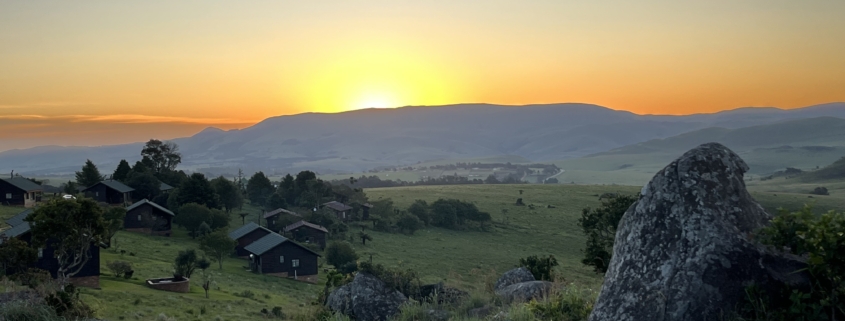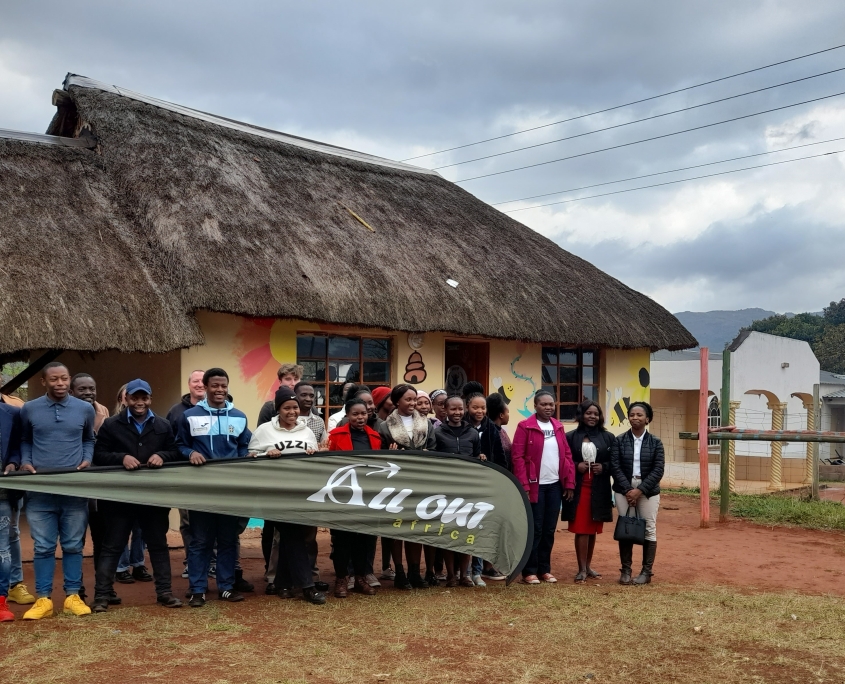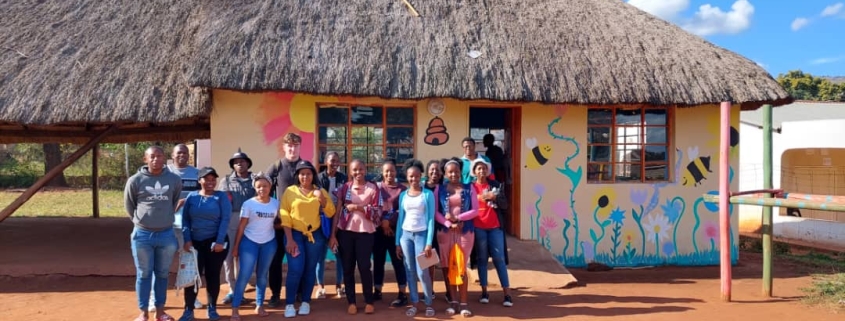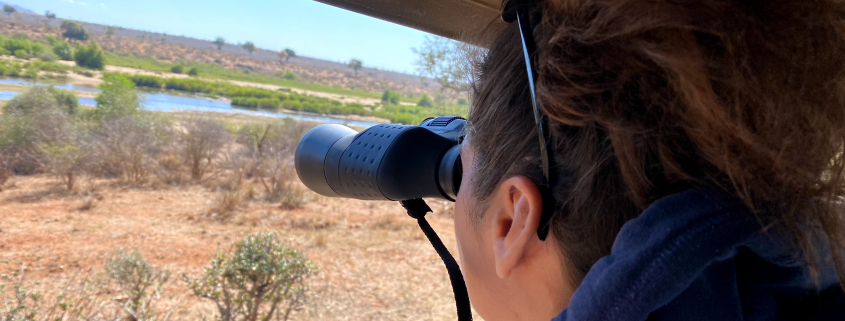One of the projects at the Savanna Research Center (SRC), located on north eastern Eswatini, is the long-term monitoring of the biodiversity of the region.
Winter and summer surveys were carried out, comprising 540 min of bird surveys; 1080 Sherman traps to survey small mammals such as mice, rats and shrews; 60 motion triggered cameras to survey predators, ungulates and other large mammals, and finally, 54 bat detectors were deployed twice a year. Vegetation surveys were paired with the animal surveys, where grass biomass, shrub cover, ground cover and some palatable and alien species were measured. These surveys were carried out in Mbuluzi Game Reserve, Mlawula Nature Reserve and Hlane Royal National Park (which form part of the Lubombo Conservancy) by All Out Africa staff working at our Savannah Research Centre.

Putting up the camera’s with a group of university students.
The aim of these surveys is to identify the different animals that inhabit these regions, the abundance or lack of them, and how their numbers fluctuate through time and different environmental phenomena such as droughts, bush fires, heavy rains, etc.
The species most commonly sighted on the camera traps were: impala, nyala, kudu, blue wildebeest, bushbuck, waterbuck and grey duiker. Others commonly seen were giraffe, zebra, chacma baboon, vervet monkey, warthog and many different bird species. Sightings by tourists and management of all these animals are frequent as most of their activity is carried out during daylight hours.
However, the most exciting pictures these camera traps capture, are the nocturnal animals that are not commonly spotted, as they tend to be secretive and active at times when most of us are sleeping. These animals captured by the cameras include: porcupine, aardvark, large-spotted genet, black-backed jackal, and bush pig. More rarely captured nocturnal animals were white-tailed mongoose, spotted hyena, and thick-tailed bush baby.
Even more exciting are some special pictures that just stick out from the rest, and these are the ones that when coming back to the center after a long, hot day, and being full of ticks, makes all your effort worth it when you switch on the generator, take the SD card out of the cameras and go through hundreds of pictures of grass moving right and left, and all of the sudden a picture of a leopard comes up!
Hlane Royal National Park is the largest reserve on the area, and although management had a good suspicion there were a couple of leopards on the property they hadn’t actually seen them, so these set of pictures is irrefutable proof of leopard still roaming free in the Lubombo Conservancy and if more pictures could be obtained in the future, identification of individuals could be performed by the pattern of spots on their coats, giving us better information on the number of leopards still inhabiting Eswatini.
All of these pictures give us important data to provide policy makers and conservation managers in Eswatini with information in order to take decisions regarding wildlife and conservation.
Written by: Gabriela Benavides (SRC Co-ordinator)
![]()

